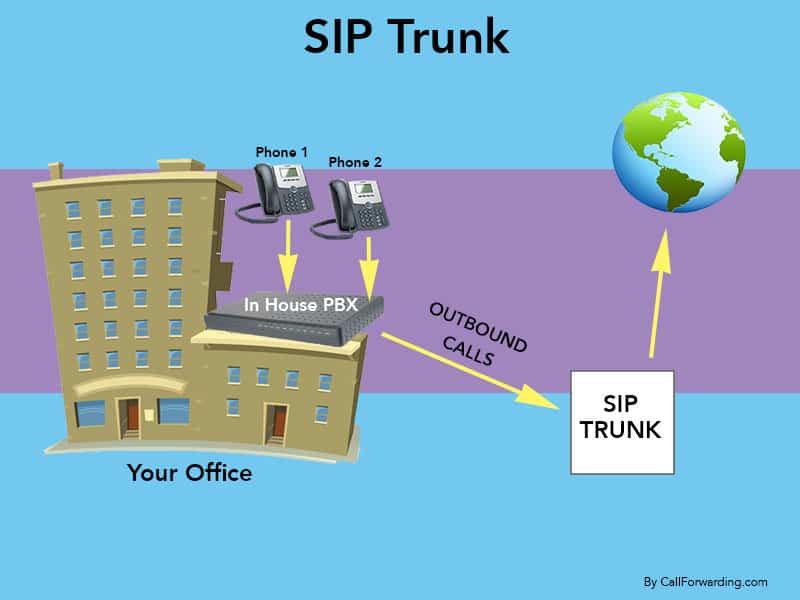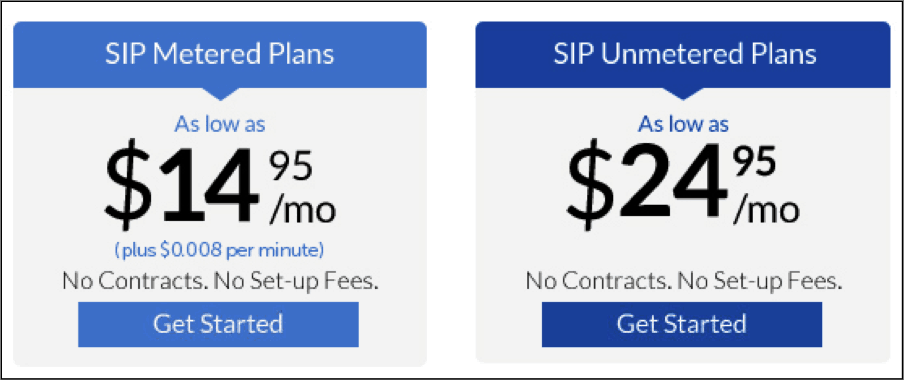SIP Trunking 101: A Guide for Business Owners
SIP trunking is a flexible, cost-effective solution for businesses that are looking for ways to cut their communication costs without sacrificing voice quality. With SIP trunking, you can add or remove channels whenever you scale up or down, and you’ll only pay for the lines you need. We’ll discuss how this service works, and help you decide if it’s the right fit for your business.
What is SIP Trunking?
Before we dive into the details of SIP trunking, we’ll take a moment to explain SIP, or Session Initiation Protocol. SIP is the standard protocol for real time and voice communication over the Internet.
To put it in simple terms, SIP is the technology that creates, modifies, and terminates sessions with one or more parties in an IP network. It can be used for something as simple as a two-way call, or as complex as a multi-media conference with multiple participants.
A SIP trunk is the virtual version of an analog phone line. Using SIP trunks, a SIP provider can connect one, two, or twenty channels to your PBX, allowing you to make local, long distance, and international calls over the Internet.
If you’re a visual learner, the diagram below might help you better understand what SIP trunking is and how it works:
Benefits of SIP Trunking
Immediate and Long-term Cost Savings
One of the core benefits of SIP trunking is the immediate cost savings that most businesses experience. Because it costs so much less to terminate calls through a SIP provider, you’ll see an immediate decrease in calling costs. Depending on the type and quantity of calls that you are making, you can save up to 50% or more on your monthly phone bill just by installing a secure SIP trunk.
In addition to the immediate cost savings, you’ll find that SIP trunking requires little to no capital investment. You won’t have to purchase additional hardware or equipment if your PBX is already SIP-enabled. If you are using a legacy PBX that is not SIP-enabled, your provider can connect it to the Internet using a simple VoIP gateway.
Since you can easily connect your existing PBX to a SIP trunk, you’re also protecting the investment that you made in your current phone system.
Simple, Flexible Scalability
Traditional phone systems weren’t built with quick and easy scalability in mind. First, analog trunks came with bundles of 24 lines. Even if you only used 10 phone lines on a regular basis, you would have to pay for all 24. And if you needed just one more line, you’d have to purchase a whole new trunk, leaving you with 23 unused lines.
Since SIP trunking uses virtual phone lines, you can add and remove them whenever you need to. If your business is particularly busy from December to February, and you need 10 additional channels for that time period, you’d simply tell your SIP provider, who can add them right away. Once March rolls around and your call volume is back to normal, you’ll just scale right back down.
The best part is that you only pay for the channels that you need and the minutes that you use, and most SIP providers have no minimum requirement for the number of channels or SIP trunks that you have to purchase.
Increased Reliability of Service
SIP trunking, like VoIP, is a cloud-based service that provides a level of redundancy. Most SIP providers have multiple layers of reliability measures in place, including multiple data centers. In the case of an emergency or a system failure, a SIP trunking provider can easily re-route your calls to a redundant data line, or forward the PBX to your team’s mobile phones to ensure that your business is always up and running.
How much does SIP trunking cost?
Initial SIP Trunking Setup Fees
Depending on the provider that you choose, the cost of SIP trunking can vary. Some SIP providers charge upfront setup fees, while others simply charge more per month to recover the cost of installation. Additional upfront fees might include the purchase and installation of a VoIP gateway; however, this piece of equipment is only necessary if your PBX is not SIP-enabled.
Ongoing SIP Trunk Fees
Your monthly SIP trunking costs will vary depending on the number of SIP trunks (and channels) that you’re using. Just like an analog trunk, a SIP trunk has 24 channels, or lines. As mentioned previously, you’ll only pay for the channels that you actually use.
Most SIP providers charge anywhere from $10 – $50 per month for each channel. You might find that some providers will bundle calling minutes into these costs. For example, if your business is located in Costa Rica, and you make many long distance calls to the United States, you might want to look for a provider that offers unlimited outbound calling to the US as part of the flat monthly fee.
Some SIP trunking providers also offer metered plans in addition to channelized plans. Take Nextiva, for example. This SIP trunking provider offers an unmetered, or channelized, plan that includes includes a certain number of minutes.
The metered plan charges at a per minute basis, but has a lower monthly recurring cost.
Source: http://www.nextiva.com/products/pbx-sip-trunking.html
How do I determine how many SIP trunks I need?
In order to figure out how many SIP trunks (or channels) your business needs, assess your current communication habits. Specifically, you’ll need to know how many employees are on the phone at the same time during your peak hours. If you have 8 employees making concurrent calls during the busiest time of day, you’ll want to get at least 8 channels.
SIP Tip: If your employees frequently put callers on hold, you might want to purchase additional channels. Even when a caller is on hold, one of your channels will be in use.
If you over or underestimate the number of SIP trunks you’ll need, don’t worry. It’s easy to add or remove channels as needed.
How much bandwidth will I need?
Your Internet provider will be able to give you a more specific answer as to how much bandwidth you’ll need to support SIP. However, you can get a good idea of what you’ll need using this simple equation:
Number of Concurrent Calls During Busiest Hours X 85 Kilobits per Second = Bandwidth in Megabits per Second Required for SIP Trunking
If you don’t have enough bandwidth, you’ll want to make sure that you upgrade your Internet connection as quickly as possible.
Are there any problems associated with SIP trunking?
Most businesses that use SIP trunks find that the call quality is just as good as (if not better) than traditional telephone systems. However, a PBX with SIP trunks may occasionally experience network issues, such as packet loss, latency (delay), or jitter. These problems are typically caused by changes in network traffic.
Fortunately, these potential issues are easily to fix. To avoid future problems with call quality, you can adjust your Quality of Service (QoS) to prioritize voice traffic no matter what else is happening on the network, or reduce the amount of traffic that your overall network handles.
SIP Trunking for Small to Medium-Sized Businesses
Looking for additional information about SIP trunking and how it works? Check out these related articles:


